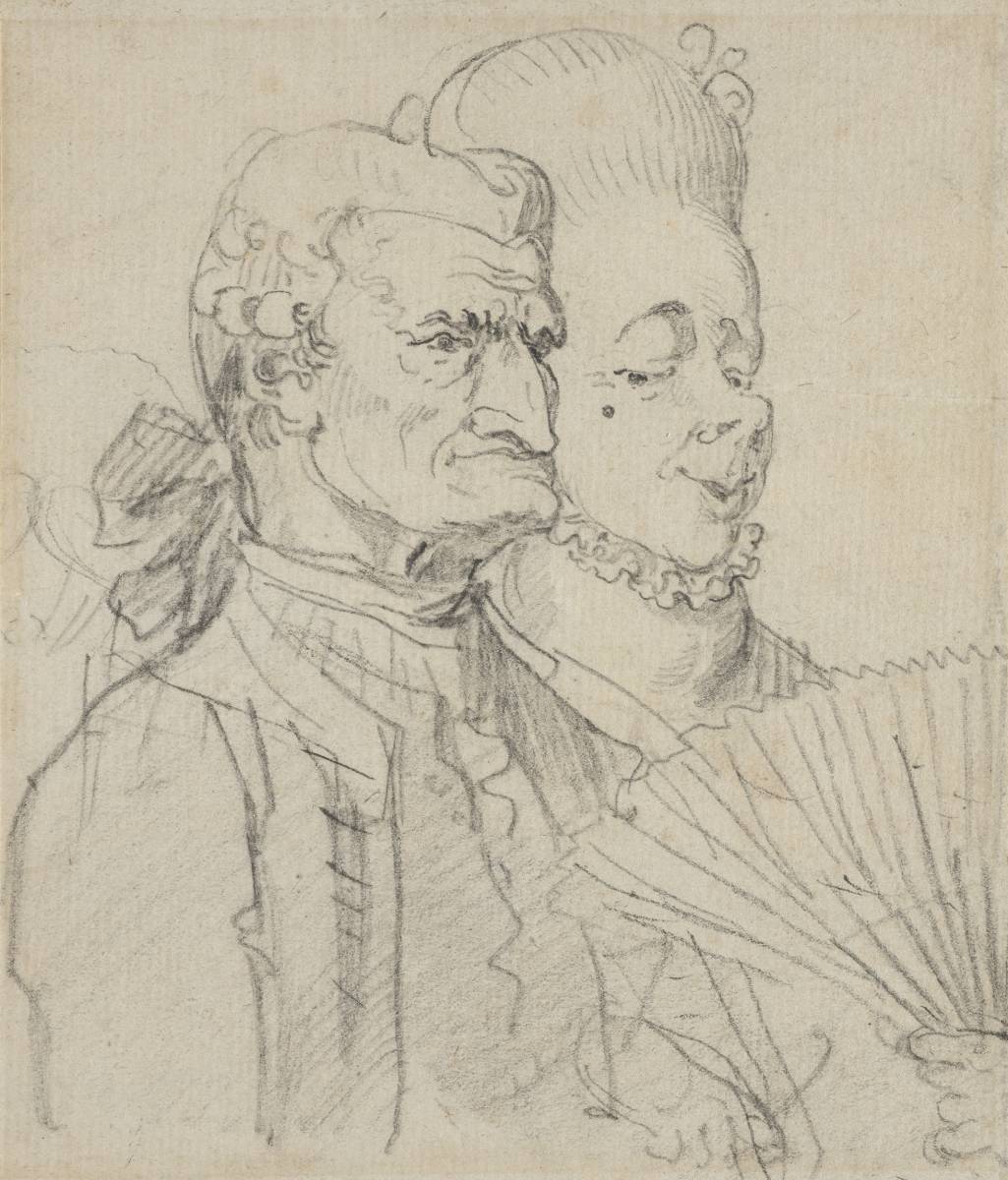This highly refined and amusing drawing shows Dance’s abilities as a comic draughtsman. Nathaniel Dance, who later changed his name to Dance-Holland, was the third son of the architect George Dance senior (1695-1768) whose most famous building is the Mansion House in the City of London. Not long after Nathaniel left school in 1748 he became a pupil of Francis Hayman and it was under his influence that his interest in painting historical subjects first developed. Although Dance practiced principally as a portraitist. In 1776 Dance exhibited at the Royal Academy for the last time as a professional artist. Dance continued to paint portraits, though with his retirement to the country in 1782 he exhibited only three more times at the Academy as an ‘honorary exhibitior’ – an expression commonly used to describe an amateur. Although not strictly speaking ‘amateur’, the principal output of his later years was very much of a type associated with amateurs – for example Henry Bunbury – caricature.
Caricature was a natural extension of portraiture, and this drawing portrays the portraitist’s interest in physiognomy. The wonderfully drawn figures show a coquettish plump woman, well into middle-age taking the hand of an older gentleman, presumably for a dance. Both Nathaniel Dance and his brother, George were famous for their humour and wit, their satire being principally focused on the weaknesses of other men. Farington recorded a comment by George Dance, summing up the painter John Downman’s constitutional slowness he said: ‘If… you were to point to a flower, & say, ‘there is a flower’ [Downman] would lift up his eyes & after a pause say, ‘Yes it is a flower’.


